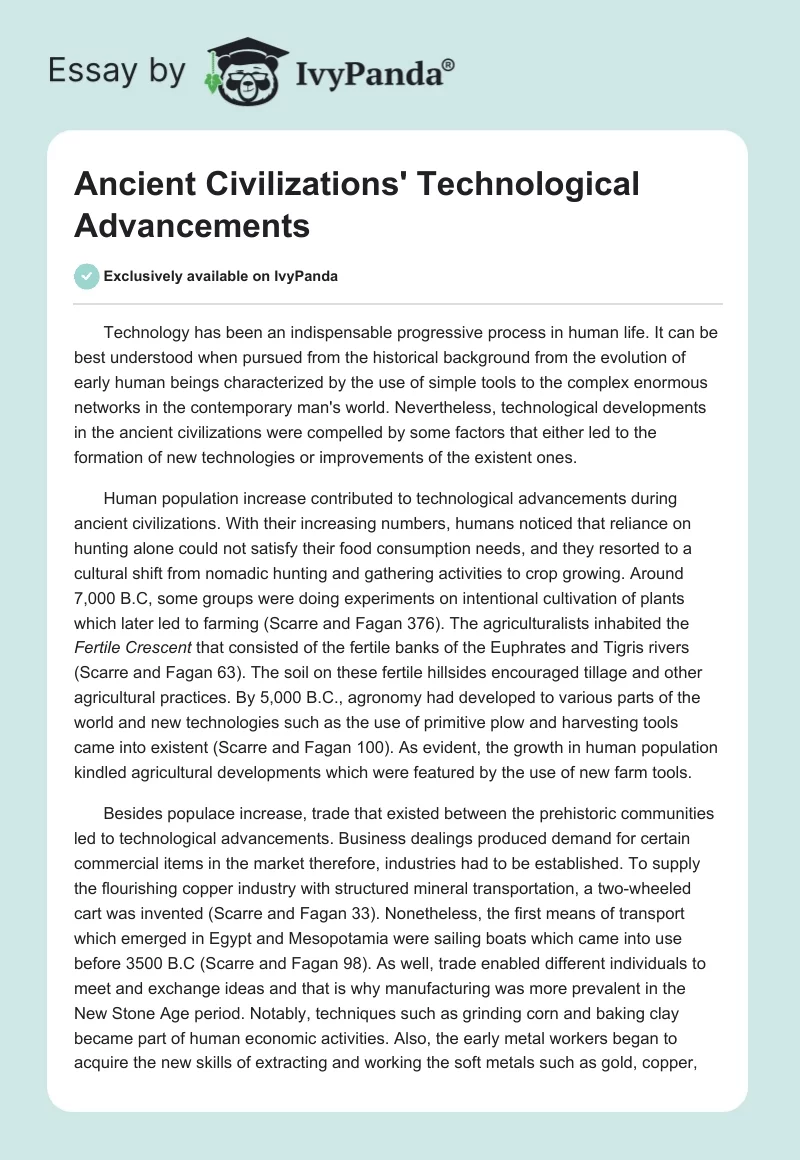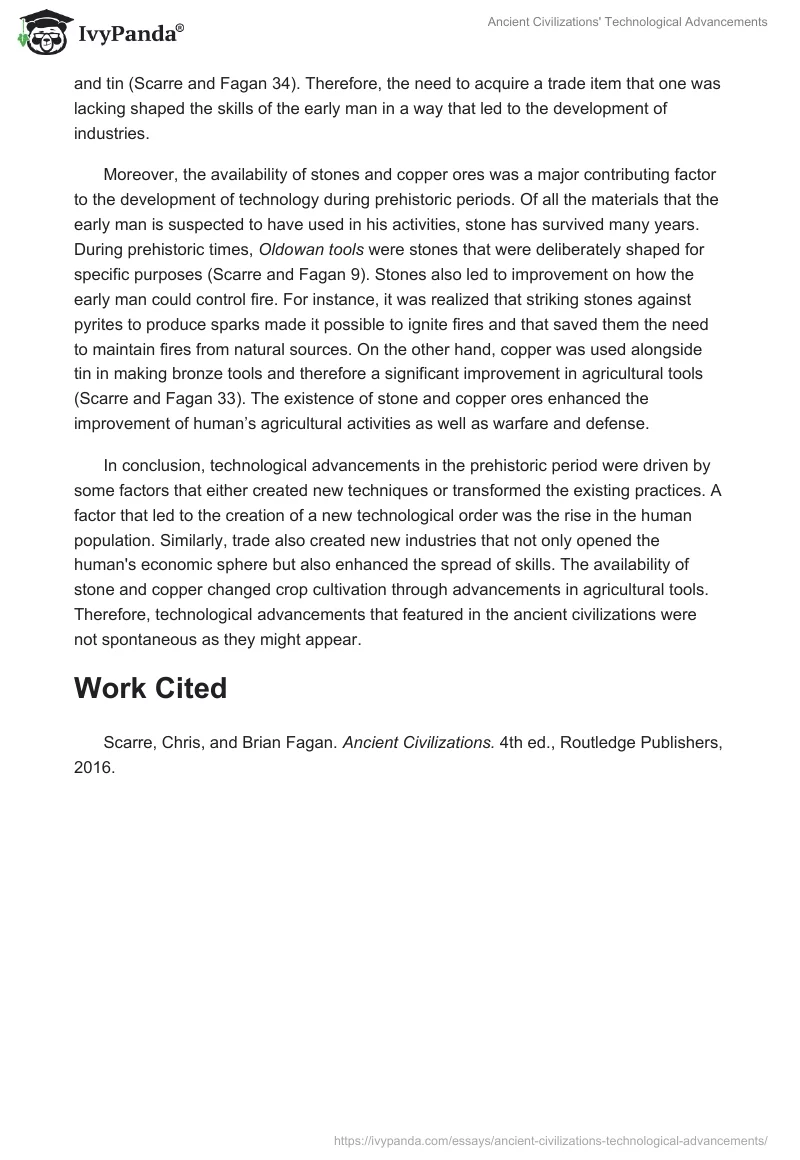Technology has been an indispensable progressive process in human life. It can be best understood when pursued from the historical background from the evolution of early human beings characterized by the use of simple tools to the complex enormous networks in the contemporary man’s world. Nevertheless, technological developments in the ancient civilizations were compelled by some factors that either led to the formation of new technologies or improvements of the existent ones.
Human population increase contributed to technological advancements during ancient civilizations. With their increasing numbers, humans noticed that reliance on hunting alone could not satisfy their food consumption needs, and they resorted to a cultural shift from nomadic hunting and gathering activities to crop growing. Around 7,000 B.C, some groups were doing experiments on intentional cultivation of plants which later led to farming (Scarre and Fagan 376). The agriculturalists inhabited the Fertile Crescent that consisted of the fertile banks of the Euphrates and Tigris rivers (Scarre and Fagan 63). The soil on these fertile hillsides encouraged tillage and other agricultural practices. By 5,000 B.C., agronomy had developed to various parts of the world and new technologies such as the use of primitive plow and harvesting tools came into existent (Scarre and Fagan 100). As evident, the growth in human population kindled agricultural developments which were featured by the use of new farm tools.
Besides populace increase, trade that existed between the prehistoric communities led to technological advancements. Business dealings produced demand for certain commercial items in the market therefore, industries had to be established. To supply the flourishing copper industry with structured mineral transportation, a two-wheeled cart was invented (Scarre and Fagan 33). Nonetheless, the first means of transport which emerged in Egypt and Mesopotamia were sailing boats which came into use before 3500 B.C (Scarre and Fagan 98). As well, trade enabled different individuals to meet and exchange ideas and that is why manufacturing was more prevalent in the New Stone Age period. Notably, techniques such as grinding corn and baking clay became part of human economic activities. Also, the early metal workers began to acquire the new skills of extracting and working the soft metals such as gold, copper, and tin (Scarre and Fagan 34). Therefore, the need to acquire a trade item that one was lacking shaped the skills of the early man in a way that led to the development of industries.
Moreover, the availability of stones and copper ores was a major contributing factor to the development of technology during prehistoric periods. Of all the materials that the early man is suspected to have used in his activities, stone has survived many years. During prehistoric times, Oldowan tools were stones that were deliberately shaped for specific purposes (Scarre and Fagan 9). Stones also led to improvement on how the early man could control fire. For instance, it was realized that striking stones against pyrites to produce sparks made it possible to ignite fires and that saved them the need to maintain fires from natural sources. On the other hand, copper was used alongside tin in making bronze tools and therefore a significant improvement in agricultural tools (Scarre and Fagan 33). The existence of stone and copper ores enhanced the improvement of human’s agricultural activities as well as warfare and defense.
In conclusion, technological advancements in the prehistoric period were driven by some factors that either created new techniques or transformed the existing practices. A factor that led to the creation of a new technological order was the rise in the human population. Similarly, trade also created new industries that not only opened the human’s economic sphere but also enhanced the spread of skills. The availability of stone and copper changed crop cultivation through advancements in agricultural tools. Therefore, technological advancements that featured in the ancient civilizations were not spontaneous as they might appear.
Work Cited
Scarre, Chris, and Brian Fagan. Ancient Civilizations. 4th ed., Routledge Publishers, 2016.


